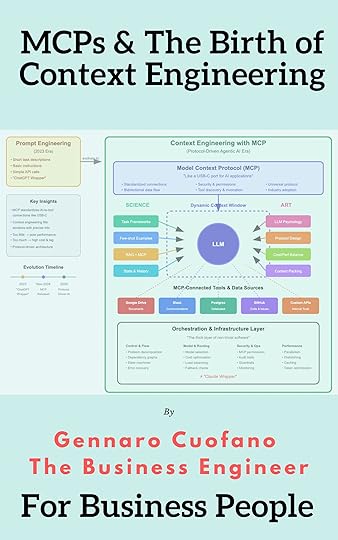The Model Context Protocol Revolution
In November 2024, Anthropic quietly released something that would fundamentally transform how AI applications are built: the Model Context Protocol (MCP).
While the AI world was obsessed with model capabilities and benchmarks, MCP addressed a different problem entirely, the messy, expensive reality of connecting AI to the world’s data.
Think of MCP as the USB-C port for AI applications. Just as USB-C created a universal standard that replaced dozens of proprietary connectors, MCP provides a standardized way for AI models to connect to any data source or tool.
This isn’t just another API specification; it’s the infrastructure backbone that makes true context engineering possible at scale.


Get MCPs & Context Engineering Now
The N×M Problem: Why MCP Was InevitableBefore MCP, every AI integration was a custom engineering project.
Each AI model needed bespoke connections to each data source, creating what engineers call an N×M problem (or the combinatorial explosion):
4 AI models × 10 data sources = 40 custom integrationsAdd a new model? Build 10 new integrationsAdd a new data source? Build 4 new integrationsScale to enterprise? The complexity becomes unmanageableThis wasn’t sustainable. Companies were spending more time building plumbing than solving actual problems.
Security was implemented differently everywhere. Switching models meant rewriting entire codebases. The promise of AI was being strangled by integration complexity.
What MCP Actually DoesMCP is an open protocol that standardizes how AI systems interact with external tools and data sources. Instead of building custom connectors for every combination, developers can now:
Build Once, Connect EverywhereWrite a single MCP server for your data source, and it instantly becomes accessible to any MCP-compatible AI model. Google Drive, Slack, GitHub, Postgres, they all speak the same language now.
Standardized SecurityAuthentication, permissions, and access control are built into the protocol. No more scattered API keys or inconsistent security implementations. MCP handles secure, bidirectional connections with proper authorization flows.
Dynamic Tool DiscoveryAI models can discover available tools and their capabilities at runtime. The model knows what it can do without hardcoded instructions. This enables truly adaptive behavior; the AI can utilize tools it has never seen before if it follows the MCP standard.
Resource ManagementMCP doesn’t just pass data; it manages resources intelligently. Streaming large files, handling pagination, managing rate limits—all standardized at the protocol level.

The post The Model Context Protocol Revolution appeared first on FourWeekMBA.



